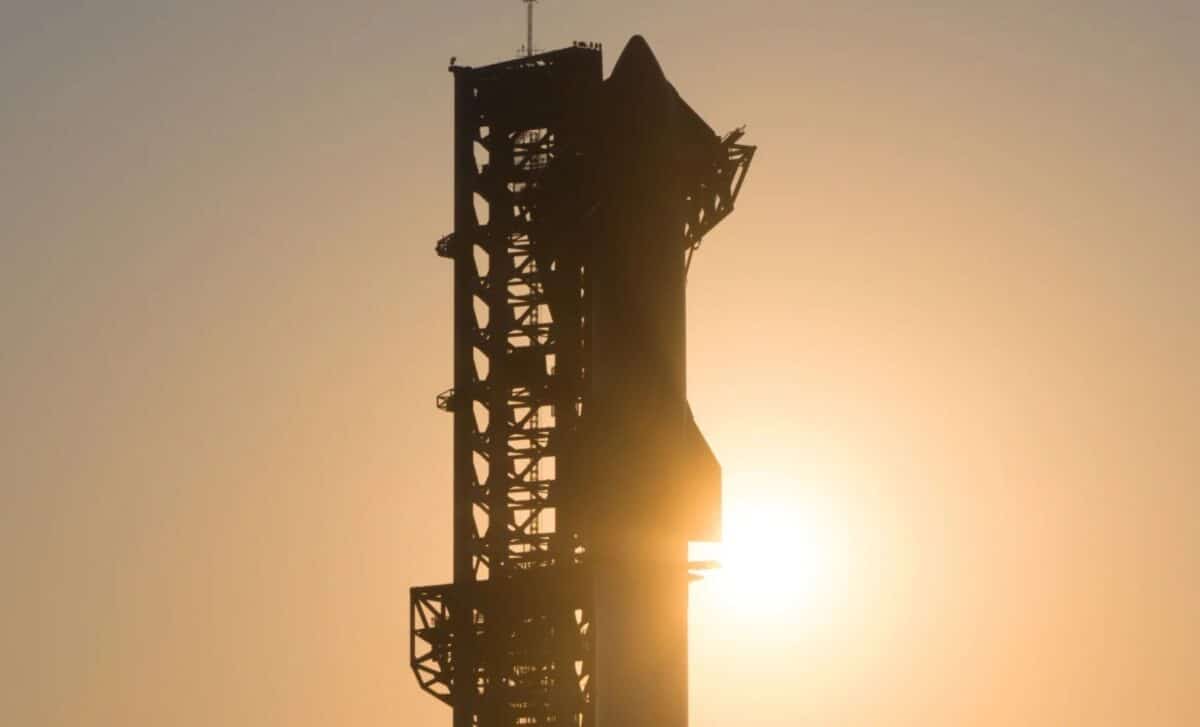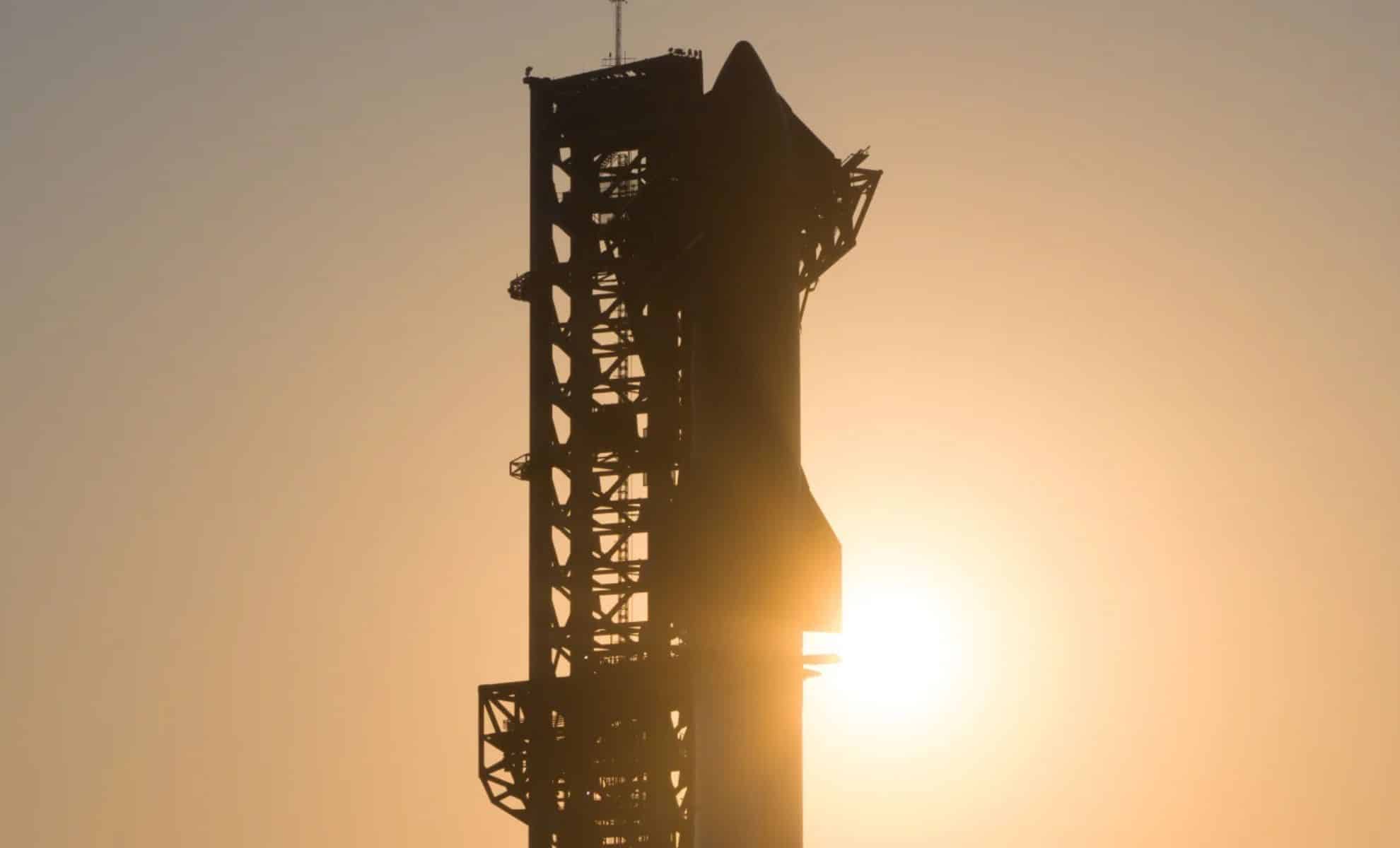SpaceX is preparing for its fifth Starship test flight (IFT-5), potentially launching as soon as October 13, 2024, pending regulatory approval from the FAA. This test flight is a key milestone in SpaceX’s vision for fully reusable spacecraft, with ambitious objectives including the first-ever attempt to catch the Super Heavy booster at the launch site and a successful reentry and splashdown of Starship in the Indian Ocean. The outcome of IFT-5 will be critical to both SpaceX’s Mars exploration goals and NASA’s Artemis program.
SpaceX’s Starship: FAA License in the Works for Potential Sunday Launch

SpaceX is on the verge of launching its fifth Integrated Flight Test (IFT-5) of the Starship rocket, which could take place as early as Sunday, October 13, 2024, pending regulatory approval. After months of preparation and delays caused by licensing issues with the Federal Aviation Administration (FAA), recent developments suggest that the much-anticipated flight might finally be cleared for launch. This test represents another crucial step toward realizing Elon Musk’s vision of a fully reusable spacecraft capable of ferrying humans to the Moon, Mars, and beyond.
Regulatory Hurdles: FAA Licensing Delays and Progress
SpaceX has been ready to proceed with the IFT-5 test since August, but the company has faced ongoing delays related to obtaining the necessary launch license from the FAA. The regulatory process, which includes coordination with partner agencies such as the U.S. Fish and Wildlife Service, has been a sticking point, particularly with regard to environmental concerns. SpaceX previously criticized the FAA for what it deemed "superfluous environmental analysis" that contributed to extended delays. In a statement last month, the FAA indicated that a license might not be issued until late November, causing frustration within SpaceX.
However, recent progress suggests that the regulatory bottleneck may be easing. According to sources, the FAA has accelerated its review process, and SpaceX now believes that the flight "could launch as soon as October 13, pending regulatory approval." While SpaceX remains optimistic, it has acknowledged that the license could still be delayed if any unforeseen issues arise. The FAA itself remains cautious, stating only that "the FAA will make a licensing determination once SpaceX has met all licensing requirements."
Given that Starship’s success is critical to both SpaceX and NASA’s future missions, the regulatory hurdles have become a significant point of contention. Elon Musk has been vocal about his frustrations with the pace of the process, emphasizing the importance of streamlined regulations to allow for more rapid innovation in spaceflight.
Ambitious Goals for Starship IFT-5
The IFT-5 flight is one of the most ambitious tests yet for SpaceX’s Starship. Starship is a two-stage, fully reusable spacecraft designed to carry both crew and cargo to deep space destinations, including the Moon and Mars. The upcoming test will not only involve launching the Super Heavy booster and Starship spacecraft but also attempt new and challenging maneuvers that are critical to SpaceX’s long-term goals.
A key objective of this test flight will be to attempt the first-ever Super Heavy booster return and catch at the launch site. After separation from the Starship upper stage, the 232-foot-tall Super Heavy booster will fly back to the launch site in Texas, aiming to land between two “chopsticks” on the tower—an audacious attempt at mid-air recovery. If successful, this maneuver would mark a significant milestone in SpaceX’s pursuit of making Starship fully reusable. SpaceX has highlighted the complexity of this feat, stating that it requires "thousands of criteria to be met," and that the catch will only be attempted if all conditions are ideal.
The upper stage of Starship, following its separation from the booster, is slated to reenter Earth’s atmosphere and splash down in the Indian Ocean. The reentry and landing burn will provide critical data on the spacecraft’s thermal protection systems, which have been significantly upgraded since the last test flight.
SpaceX engineers have invested more than 12,000 hours reworking Starship’s heatshield to withstand the extreme conditions of atmospheric reentry. This includes a new generation of thermal protection tiles, a backup ablative layer, and additional reinforcements around the vehicle’s flap structures. These upgrades are designed to increase Starship’s durability and enable a smoother reentry, with the goal of achieving a successful soft landing in the target zone.
Importance of Starship IFT-5 for SpaceX's Vision
The IFT-5 mission is far more than just another test flight—it’s a critical stepping stone in SpaceX’s broader ambition to revolutionize space travel. The Starship system is at the core of SpaceX’s Mars colonization plans and is also a crucial part of NASA’s Artemis program, which aims to return humans to the Moon and establish a sustainable presence there by the end of the decade.
SpaceX has already secured a multi-billion-dollar contract with NASA to use Starship as a crewed lunar lander for future Artemis missions, and the outcome of the IFT-5 test will play a vital role in determining the spacecraft’s readiness for these missions. Elon Musk has repeatedly stated that the development of a fully reusable spacecraft is essential for reducing the cost of space travel and enabling large-scale missions to Mars and beyond.
In an ideal scenario, IFT-5 would demonstrate Starship’s ability to launch, recover the booster, and perform a successful reentry. This test is a crucial part of SpaceX’s efforts to refine the vehicle’s design and make the necessary improvements for future crewed missions. Musk has set ambitious targets, indicating that the first uncrewed test flights to Mars could occur as soon as 2026, with the first crewed missions following in 2028. Achieving these goals will depend heavily on the success of ongoing test flights like IFT-5.
Looking Forward: The Future of Starship and Space Travel
SpaceX’s Starship represents the pinnacle of innovation in the space industry, and the outcome of IFT-5 will be closely watched by space agencies, industry experts, and enthusiasts alike. If SpaceX can successfully execute the booster catch, splashdown, and other mission objectives, it will mark a major leap forward in proving the viability of fully reusable spacecraft. This would not only lower the cost of future space missions but also make large-scale exploration of the Moon, Mars, and other destinations more feasible.
However, the path forward remains contingent on regulatory approval and the successful execution of increasingly complex test flights. The FAA's licensing decision will be a major factor in determining whether IFT-5 can proceed on Sunday as planned, or whether SpaceX will face further delays. While SpaceX remains optimistic, there is no guarantee that the test will go forward this week. As the company continues to push the boundaries of what’s possible in space travel, each test represents an opportunity to learn and refine the technology that could eventually carry humans to Mars.
As the space industry continues to evolve, SpaceX’s Starship program stands at the forefront of the movement toward reusable, sustainable space travel. With each test flight, SpaceX inches closer to making Musk’s vision of interplanetary colonization a reality, laying the groundwork for a future where humans are a multi-planetary species.



